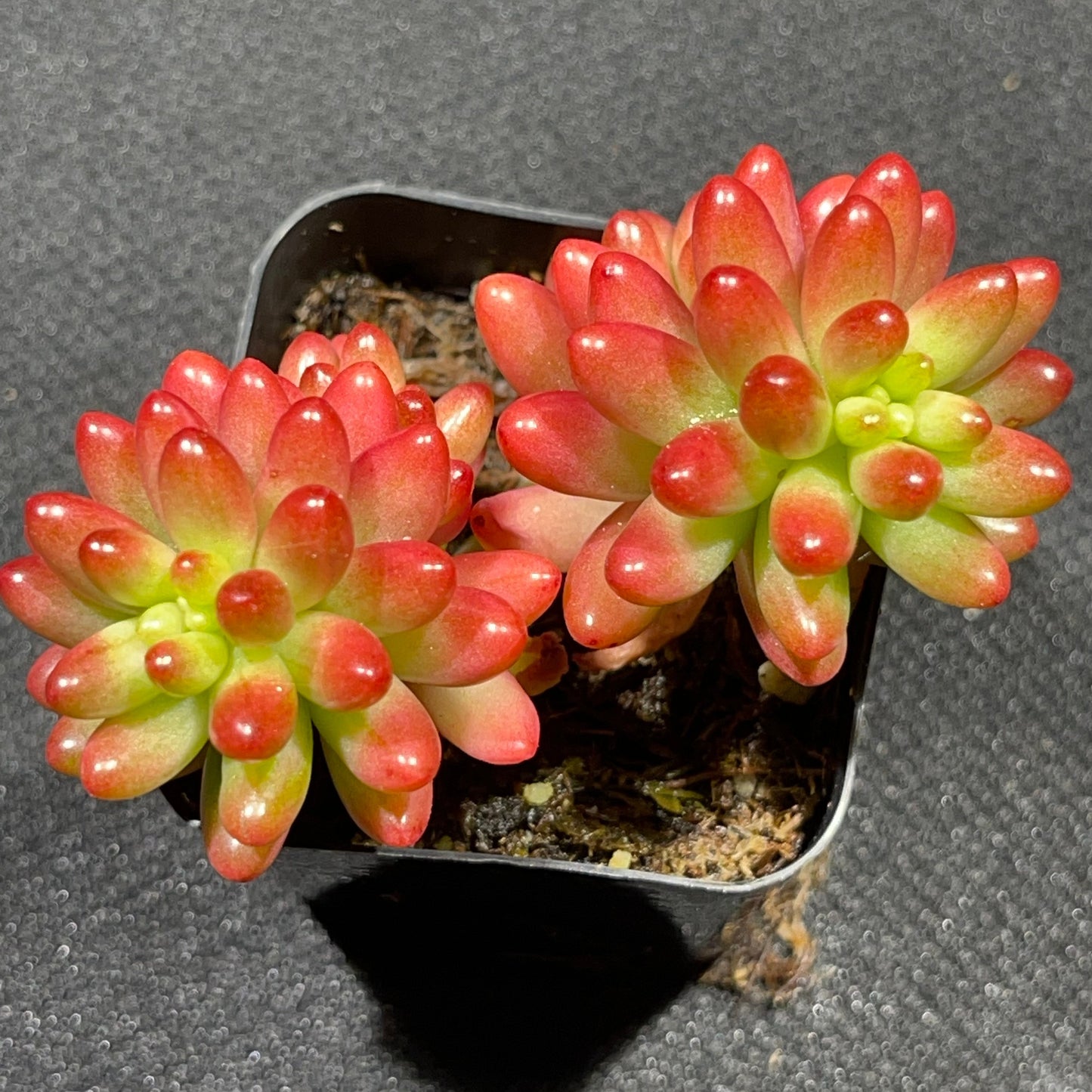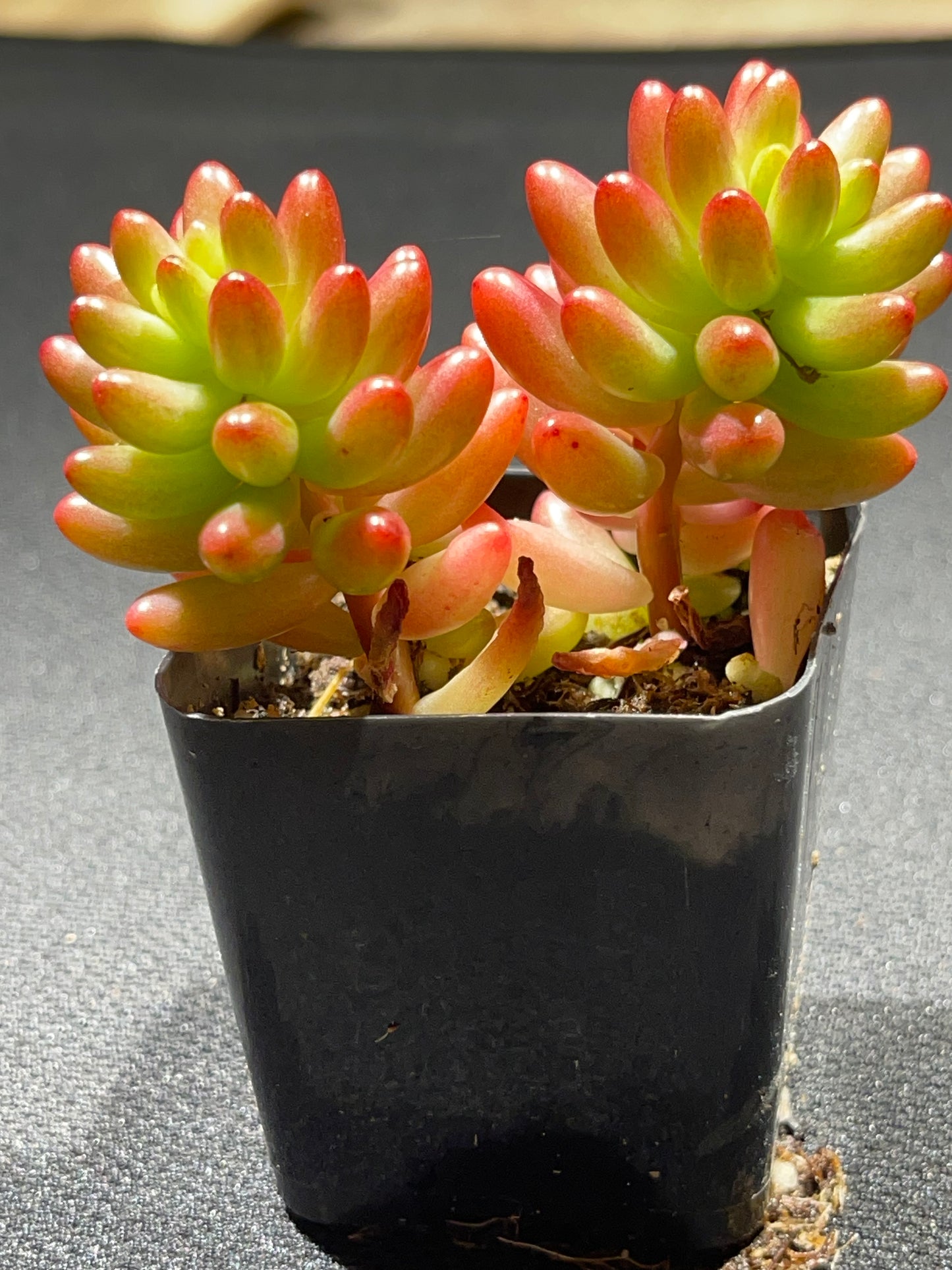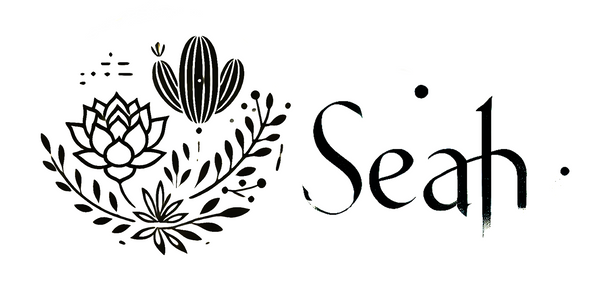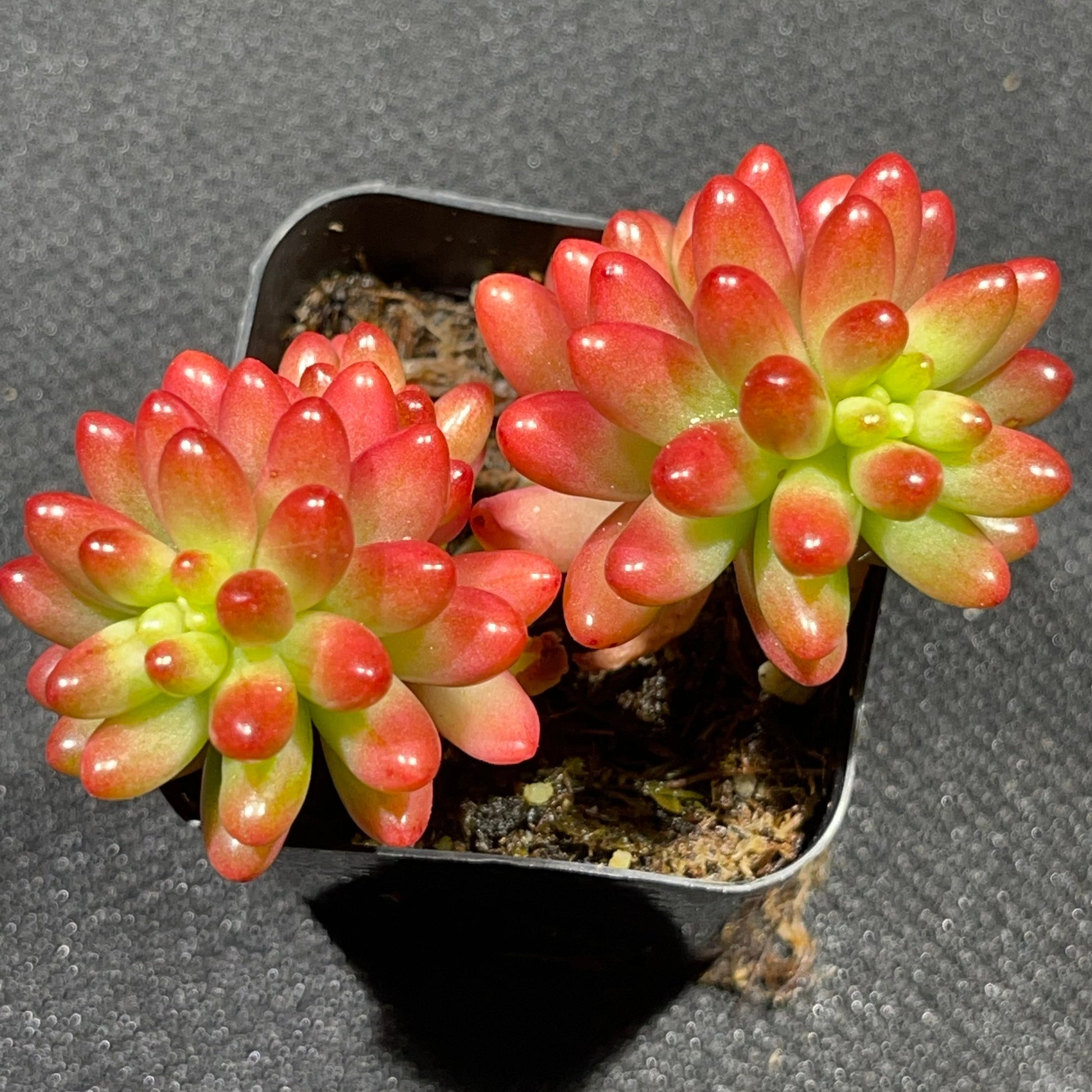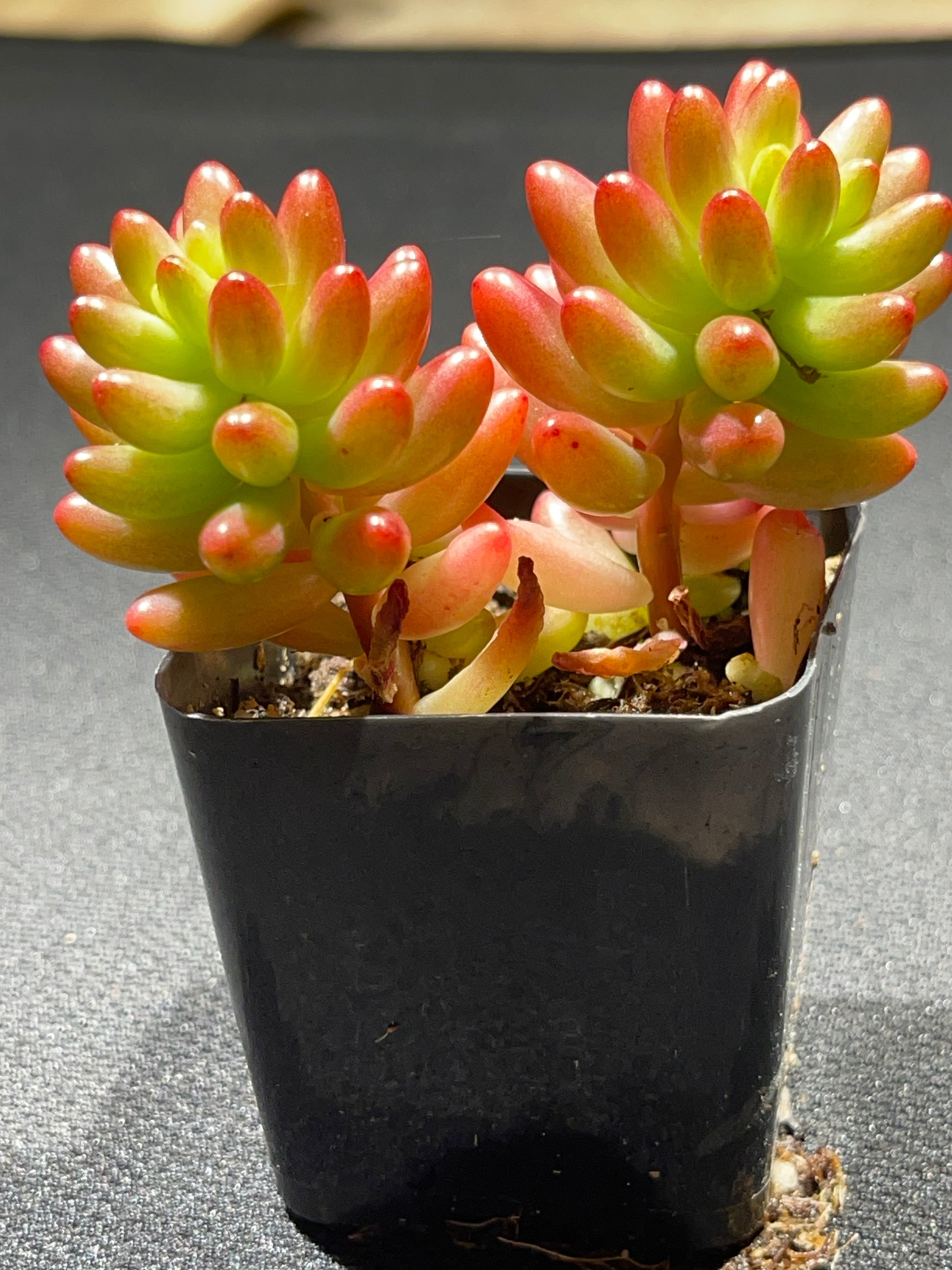SEAH
Sedum rubrotinctum - Gominola rosada
Sedum rubrotinctum - Gominola rosada
Precio habitual
$2.99 USD
Precio habitual
$4.99 USD
Precio de oferta
$2.99 USD
Precio unitario
/
por
Los gastos de envío se calculan en la pantalla de pago.
No se pudo cargar la disponibilidad de retiro
Sedum rubrotinctum, commonly known as Pink Jelly Bean or Pork and Beans, is a colorful and attractive succulent. Here is a detailed description of its morphological characteristics, growth habits, maintenance points, and reproduction methods:
Morphological Characteristics
- Leaves: The plant is renowned for its chubby, jelly bean-shaped leaves that are green at the base, turning to a beautiful pink or red at the tips under the right sun exposure or stress conditions. The leaves are glossy, giving the appearance of candy or jelly beans.
- Size: It grows as a low, spreading succulent reaching up to 20 cm (8 inches) in height, with a tendency to sprawl outwards, making it a great ground cover or container plant.
- Flowers: Sedum rubrotinctum blooms in the spring and early summer, producing small, star-shaped, yellow flowers that contrast nicely with its colorful foliage.
Growth Habits
- Light: Prefers full to partial sunlight. Bright light enhances the red to pink hues of the leaves, while too much shade will cause the plant to revert to a more green coloration.
- Temperature: It is relatively hardy but does best in temperatures above freezing. It can withstand light frosts, but prolonged exposure to cold can damage or kill the plant.
- Water: Water moderately during the growing season, allowing the soil to dry out completely between watering. Reduce watering in the winter to prevent root rot.
Maintenance Points
- Soil: Requires well-draining soil. A cactus or succulent potting mix is ideal.
- Pot: Choose a pot with good drainage holes to prevent water from pooling at the bottom, which can lead to root rot.
- Fertilizer: Fertilize lightly with a diluted succulent fertilizer during the growing season for optimal growth and health.
- Pruning: Not necessary, but you can prune back the plant to encourage bushier growth or to remove parts that are too spread out.
Reproduction Method
- Leaf Cuttings: One of the easiest methods to propagate Sedum rubrotinctum is by leaf cuttings. Simply remove a leaf, let the cut end callous over for a few days, and then place it on top of moist soil. The leaf will eventually sprout roots and a new plant.
- Stem Cuttings: Cut a stem, allow it to dry for a day or two to form a callous, and then plant it in well-draining soil. Water lightly until the cutting establishes roots.
- Offsets: The plant may produce small offsets that can be separated and replanted.
Sedum rubrotinctum is a versatile and low-maintenance succulent that adds vibrant color to succulent gardens, containers, and indoor arrangements. Its ease of care and propagation make it a favorite among beginners and experienced gardeners alike.
Compartir
